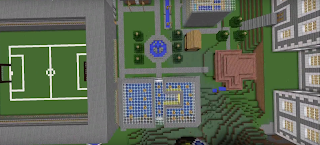How do you monitoring eSport students physical exercise?
We think we've found one way to do this: activity bracelets.
BACKGROUND
During the schoolyear of 2015-2016 we tried to have our eSport students do training diaries. With such a diary we also wanted to have a estimation of how much young people also play competive computergames.
As it was hard to have the students understand why its important we changed it last schoolyear (2016-2017) to make a reflection after each in game session. That report would be a tool for us to help them develop their personal skills but also highlight what is not working (be in ti´me, communication, teamwork and more).
None of this try out have been working as we want. They (our students) want eSport become a real sport but they don't understand why they have to help us prove it. Not even when we concentrated us on the actual gaming sessions it worked.
ACTIVITY BRACELETS
Suddenly we got funding to use activity bracelets and that money couldn't be used on salary's, instead all should go to motivate the students to exercise! The funding gave us a chance to use gamification on something boring as cardio and walking.
We made the walking to a game, each step was one experience point. At a certain amount of steps you achieved next level (ding!) and shortly this is how our gameplan looked like and you can read more about it here.
RESULT
We thought 10.000 steps a day would be reasonable and therefore a month of 30 days would result in 300.000 steps (xp) and a level to reach (lvl 2, and 20€ ingame cash). We had to put a fairly high level as a STEAM card with the value of 20€ (~23,50 USD) is pretty much for a level.
Even though 300.000 steps is that much (30 days * 10.000 steps) the amount of steps scared our students. We started in December 2016 and in March 2017 we invented a special occasion: attend the Finnish classic Kalevan Kierros but instead of actual skiing or running, our students had to walk the same distance during one day (between 00:00-24:00) and only one challenge a day. So you couldn't do a 30.000 step challenge and also get all the other lower ones done in the same day. 15 kilometer (km) = 15.000 steps one day, 23 km another day, 54 km a third day. In total we wanted them to walk 218 km = 218.000 steps during one month.
This they thought were achievable and they started to walk.
And walk a lot!
Each row is one student, and half of our students have been used it (and reported their steps).
We also challenged people from the Finnish eSport scene, like different organizations, researchers and the federation to take the challenge. Of those eight, four accepted the challenge and two made it! So before judging our students, this to start exercise is a challenge for the whole eSport world.
THE SCHOOLYEAR 2017-18
Every eSport student will get an activity bracelet as it turns out to be an easy way to monitoring their exercise, their sleep and much more. All they need to do is to wear them and empty their data in a computer.
With the last years experience we will set up a required amount of steps you have to walk to pass the course, maybe 5.000 steps a day. And as we don't have funding to such a generous awards this year we'll set up an own higher goal and those students who achieve that will get a reward (like a 20€ STEAM card).
FEEDBACK
Otto Takala, vice president of Finnish Student Sports Federation (OLL) and vice chairman at the Finnish eSport federation (SEUL) gave us this feedback on our activity bracelet try-out:
"
I like that walking challenge concept. It teaches young people important routines and it also develops control of life.
In a bigger picture - if we watch into the future - today's biggest challenge is 'how to motivate people to exercise'. And I see this case 'Prakticum eSports' is good pilot for that and one big step towards the future.
"





